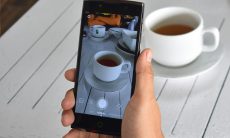Is mobile marketing ready to change healthcare? You decide:
- 56% of US consumers prefer like the idea of remote healthcare (source: Price Waterhouse Cooper)
- 41% prefer care delivered via mobile devices (PWC)
- 40% of office visits could be replaced by eVisit (source: Mayo Clinic)
- 30% of the 9000+ healthcare apps available are targeted at physicians at clinicians (PWC)
- 900+ hospitals are actively using social networking tools to communicate with patients (MC)
Mobile marketing is defined as interactive wireless media to provide customers with time and location sensitive, personalized information that promotes goods, services and ideas, thereby generating value for all stakeholders. Examples of “interactive wireless media includes smart phones, mobile websites, tablets (iPads), apps, SMS messaging and mobile social networking.
Does it generate value? The facts suggest mobile marketing should have transformation impact is healthcare. However, return on investment (ROI) in healthcare is accountable to multiple standards – profits and patient health outcomes.
Does mobile marketing “show me the money.” Here are 7 case studies that prove the ROI of mobile for healthcare marketers.
HEALTH CARE FOR THE UNINSURED
- LTP MEDICAL MOBILE INC (aka “The Health Nut”): Is is a non-profit organization whose mission is to serve the medical needs of the uninsured population of Lincoln Parish, Louisiana, through mobile medical care and a mobile clinic. It is estimated to have had a $3,000,000 impact on the Lincoln Parish economy. It delivered 2546 services, saved 35.9 “quality adjusted life year” for and estimated value of $2,514,436. It also saved $444,180 in emergency visit cost. It had a 6-to-1 ROI.
SOCIAL NETWORKING FOR HIGH RE-ADMITTANCE PATIENTS
- CLEVELAND CLINIC: By structuring a cross-functional team to enable education, collaboration, and smart governance, the Cleveland Clinic deepened engagement with its consumers around the globe – both providers and patients. They used Facebook and Twitter for daily wellness tips; LinkedIn for professional recruitment and YouTube for content on diseases and patient stories. They saw increased website traffic, attendance at health lectures go and, most importantly, new and existing patients making and keeping more appointments.
PATIENT ADHERENCE
- RALEIGH-WINSTON SALEM HOSPITAL NETWORK: Is comprised of UNC Health Care, Duke Medical and Wake Forest Baptist Health among others. They created a Mobile App to improve patient adherence with the roughly 60%, or 240,000 patients, who had smartphones. They estimated it impacted 1 in 10 patients. At a contribution of $2,000 per procedure, these 24,000 patients represent $48,000,000 in bottom line impact.
BETTER HOME-BASED HEALTHCARE
- CARITAS HOME CARE: Boston-based home healthcare agency used iPads and mobile devices to enhance communications and data collection with its 150 mobile clinicians. Caritas documented how the mobile devices were able to save 19,200 hours or 98 hours per clinicians per year. Although Caritas didn’t release salaries of clinicians, if we estimated $50/hour, which would be conservative, Caritas saved $960,000. If the devices were $100 each for 150 clinicians at $15,000, which would also be conservative, the ROI would be 64-to-1.
SELF MONITORING
- JANSSEN (PSORIASIS 360): Launched a mobile phone app to help psoriasis patients track the severity of their condition. The index helped them know when to seek professional care and allowed their medical professional assess to the severity of their patient’s condition. Janssen also opened a Facebook page, which they moderated for regulatory reasons, to let patients tell personal stories and had over 30,000 posts and comments. According to Janssen, the investment in the mobile app overachieved ROI but more important delivered the right therapy to the right patient at crucial times.
SALES DETAILING
- BENCO DENTAL: Benco wanted to improve customer satisfaction with dentists by responding faster to dentists’ questions and requests for information. Benco used iPad and mobile devices with its 450 sales representatives to dispatch information faster and in real time. They increased customer satisfaction, improved sales productivity by 15%, and the adoption of their sales material increased by 20%, through access to sales collateral on the road.
HEALTHCARE DONATIONS (NON-PROFITS)
- AMERICAN HEALTH ASSOCIATION: Is composed of 3 communities that collectively sponsors 1000+ events/year. The communities are 1) Power to End Stroke, 2) Go Red for Women and 3) Start! Extend Your Life. AHA changed how donations were collected at events from paper and clip board to SMS messaging with strategically. Response rate for donations is 5X greater and the process from sign ups to donations which used to take weeks or longer now occurs within 24 hours.
The American Heart Association case studies in one of ours.
On August 20-21, I will be speaking at the CBI’s Mobile Innovation Summit in Philadelphia PA on Measureing the ROI of Mobile Innovation along with my colleague and strategic partner, Dr. Augustine Fou. Will we see you there?
Do these case studies prove the ROI of healthcare mobile marketing to you?




